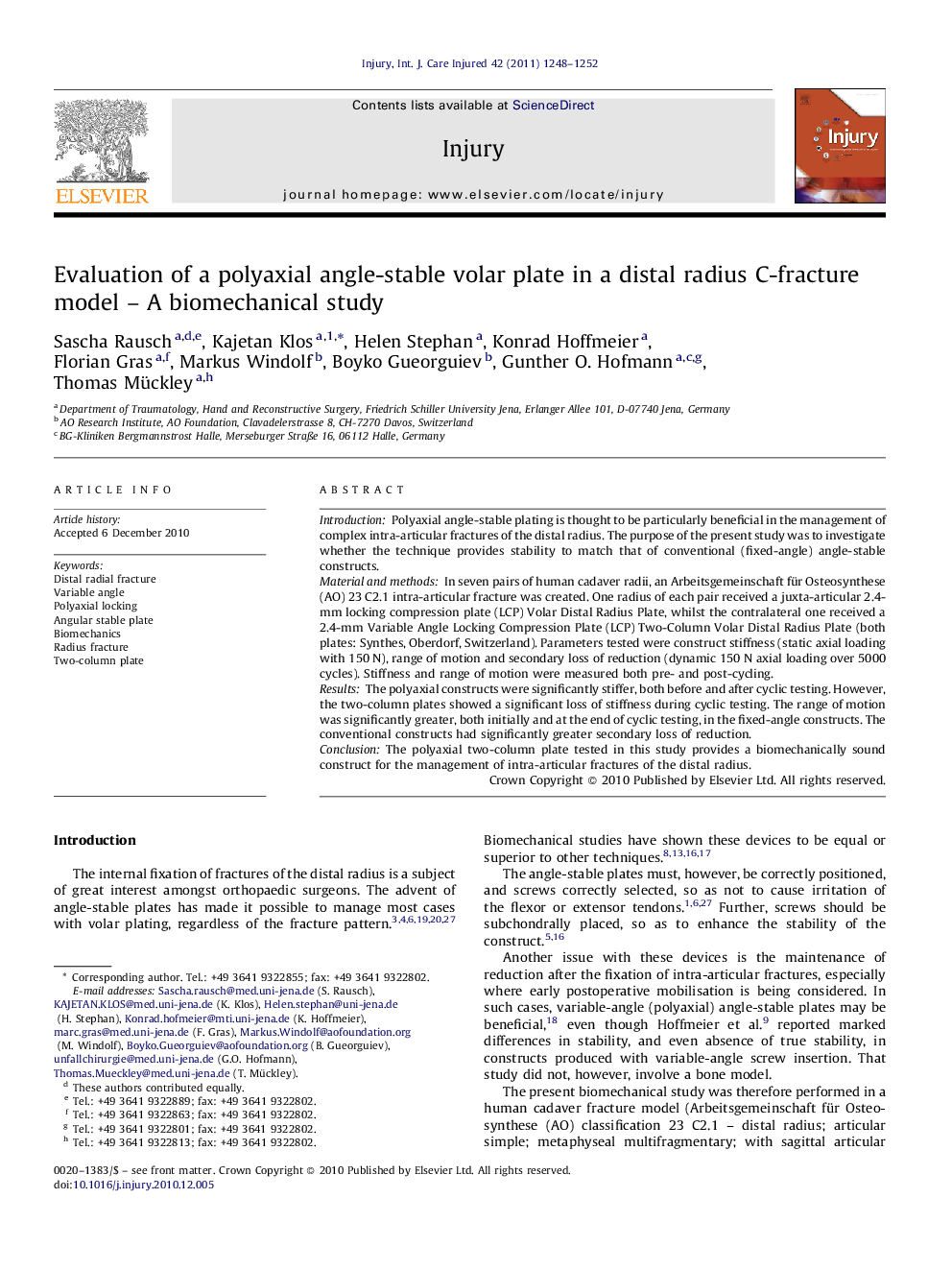| Article ID | Journal | Published Year | Pages | File Type |
|---|---|---|---|---|
| 3239972 | Injury | 2011 | 5 Pages |
IntroductionPolyaxial angle-stable plating is thought to be particularly beneficial in the management of complex intra-articular fractures of the distal radius. The purpose of the present study was to investigate whether the technique provides stability to match that of conventional (fixed-angle) angle-stable constructs.Material and methodsIn seven pairs of human cadaver radii, an Arbeitsgemeinschaft für Osteosynthese (AO) 23 C2.1 intra-articular fracture was created. One radius of each pair received a juxta-articular 2.4-mm locking compression plate (LCP) Volar Distal Radius Plate, whilst the contralateral one received a 2.4-mm Variable Angle Locking Compression Plate (LCP) Two-Column Volar Distal Radius Plate (both plates: Synthes, Oberdorf, Switzerland). Parameters tested were construct stiffness (static axial loading with 150 N), range of motion and secondary loss of reduction (dynamic 150 N axial loading over 5000 cycles). Stiffness and range of motion were measured both pre- and post-cycling.ResultsThe polyaxial constructs were significantly stiffer, both before and after cyclic testing. However, the two-column plates showed a significant loss of stiffness during cyclic testing. The range of motion was significantly greater, both initially and at the end of cyclic testing, in the fixed-angle constructs. The conventional constructs had significantly greater secondary loss of reduction.ConclusionThe polyaxial two-column plate tested in this study provides a biomechanically sound construct for the management of intra-articular fractures of the distal radius.
